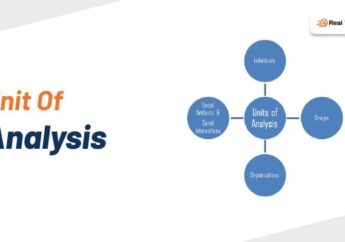How to Lead Executives as the CEO?
by Abdul Aziz Mondal How to Guides Published on: 19 November 2020 Last Updated on: 21 May 2025

Why are leadership and its effectiveness so important for newly minted Presidents or Chief Executives?
Picture this: It’s probably the first time after decades of working from the bottom up and listening to countless programs on leadership. Finally, you find yourself now in the chair as a leader of leaders, and all eyes are on you.
The right perspective and frame of mind are crucial in how you tackle your new job as the chief executive. Obviously, you must perform well in your job as you are on a mission to deliver high business performance.
Unlike every other job you may have held, every eyeball now is a stakeholder, and your direct reports are the company’s functional leaders looking to you for direction.
The big decisions start and stop with you. Like never before, you will need a new and refreshed perspective of HOW to tackle leadership versus WHAT to tackle as a leader. Having the right team and knowing how to lead them is the difference between your success and failure.
Primary Course Of Discussion
We will focus on leadership considerations internal to an organization vs. external to an organization. Also, there will be a discussion on the perspective of a Chief Executive’s view of leadership and its complexity.
We will discuss the many layers of leadership, from leading as a small company manager to leading thousands of employees in a bigger organization. The concept of leadership is far more complex than just the weight of responsibility and accountability. It also entails the sometimes-conflicting balance of decisions on livelihoods and shareholder expectations to more intrinsic forms of equality, empowerment, and the belonging of a workplace community.
The Core Leadership Ingredients
1. Build Trust
Trust is the single most important asset for a leader to operate his team efficiently in order to deliver sustainable performance. Trust amongst your executive team. Everything will eventually fall apart.
Consider the conductor in the orchestra. They are not executing the complex percussion or the taming of the strings. Conductors, in many ways, plan and set strategy for the performance and bring it to life with excitement and a narrative that links everyone together.
Trust is the # 1 ingredient for that to happen. However, trust goes both ways. So, if the soloist can’t do their job, what happens? Risk creeps in.
This is no different in business. So how do you know that you not only have that trust but also have a team made up of competent people who can do their jobs at your pace and style?
Yes, pace and tempo are critical, but you have to foster that unison throughout the year. You cannot just wait for the grand show as a performance indicator and hope for an encore. Take the time to understand your direct reports and where they are coming from. This will help you identify their aspirations and what they hope to achieve in their careers.
Everyone has a story, a style, and an agenda. Try to align around a common theme to rally the team, allow for vulnerable moments of storytelling that create breakthroughs in interpersonal relationships, and continue to challenge “Unconscious Bias.”
It’s everywhere. This will set a tempo for building positive intent and trust and earning a sense of community. Building trust is crucial, but just never forget that you are the boss, and they are looking for you to lead.
Don’t allow Kumbaya moments to muddy the waters on who is calling the shots. There can only be one conductor.
2. Declare the Mission and Co-Own the Objectives
Declaring the mission is your calling card. Therefore, use it effectively. Execute this in a way that is achievable and enrolls a following of people.
Be clear as the leader what the mission is and provide the building blocks to achieve it. Then, galvanize your executive team to build the objectives of “how” to achieve the mission.
I’ve learned multiple times that even if you have the right answer, restrain from voicing it immediately, but instead engage the team to problem solve and shape the answer with the team.
“Bring Them Along” is the phrase I heard repeatedly on my way to the CEO chair. Being the smartest guy in the room isn’t always the best card to play.
When you immediately solve their problem, most of the time, people have an innate rejection attitude to being given the answer because they really do not know how you arrived at it.
So, instead, lay out the building blocks of the mission. However, let the team shape it so they can own it as well. Who knows, in the process, they may hopefully realize that you are not perfect. This can help you earn trust.
Defining Mission
Defining the mission is your job as a leader. Do not democratize that role, or it becomes watered down. Be thoughtful and collaborative with your stakeholders (Board of Directors or Investors) when arriving at the mission, but bring the challenge of the “how-to” of the mission with guardrails/strawman to your executive team.
They, in turn, need to solve it and have actionable and measurable objectives. It’s critical in this process to ensure your executive team members are discussing things with each other and have a healthy debate about each other’s expertise.
Facilitate cross-sharing of ideas and discussion with no over-reliance on an expert. Fragile egos and lack of self-awareness tend to show up in these types of exercises. As a leader, keep the pace and re-orient to mission and participation.
Ultimately, the outcome is a forum for everyone to be heard, opinions discussed, expertise weighed, and inputs incorporated. Achieving that level of discussion and input to lay out the mission’s enterprise objectives ensures accountability amongst each executive team member for their respective commitments.
3. Communicate and let the Organization know
Consistency in communication and authenticity of leadership will endear the organization with the mission, like an echo. When your entire organization understands what is expected, everything stays in sync.
Introverted Vs. Extroverted
While there are introverted and extroverted leaders, how you come across in the leadership spectrum is quite important to those directly in your responsibility as well as those 2 degrees separated from your direct reports.
Introverted leaders tend to communicate less and often need time to express their thoughts in larger groups. Meanwhile, extroverted leaders are constantly communicating and perhaps share too much often. Both can be effective, but your style must flex with your executive team and the extended leaders in your company.
Filling The Void
People tend to fill in the gaps when there is a void or abundance of information for clarity of mission. This is true despite your direct reports talking to their people, and they to their people. The gossip and communication channels have no end, like social chatter.
While it is easy to communicate your financial targets or objective of share or volume or functional targets, it is not easy to communicate style, pace, or sequence of implementation. Often, that is carried through an organization through stories or observed actions and tone/sense of urgency.
This is when it is more critical than ever to have coffee chats across the organization to listen, listen, listen. Hear how your message is trickling down to others and use Q&A sessions to dispel false or wrongfully perceived pace, tone, or sequence of how you are leading.
It also allows you to understand how your message to direct reports is understood or perceived directly by them in your actions. To be effective, you have to be authentic, or people will not believe you. You have to define your brand so it integrates with the cultural nuances that allow the company to relate and connect with you.
Understanding Brand Artifacts
These brand “artifacts” can be how you use communications platforms, like town halls, to deliver messages. They also can be how you send written communications with a distinctive tone.
Look for and be deliberate in reinforcing messages on the mission, culture, performance, and health of the business. Put a bit of you into all so your authentic self is distinctive throughout those interactions.
Remember, you are the Boss, so consistency matters and optics matter. Often, your brand is weighed and measured constantly by the liberal, the conservative, and the fickle. Many people will see you through their respective lenses with opposite conclusions.
The Burden
It’s the burden of leadership, which is why it’s often referred to as a lonely place. You may feel that sometimes employees want so much from you to the point of absurdity while you have the intense pressures on your shoulders of a business that require making awfully hard decisions.
Leadership is knowing that not all empathy flows both ways. Leadership is not about pleasing everyone but committing to being transparent and consistent in communicating the leadership vision, mission, and style in a consistent manner without polarity.
I like to sometimes refer to this as “Tribal assurance.” This is hard to get and easy to lose. Your leadership “perception” matters. Thus creating safety, consistency, and predictability in assurance.
If inspiration is a descriptor used in your perception, then that is the icing on the cake. Inspiration alone does not make the cake or the leader.
Now that you have some of the basics in the toolbox, it’s time to take stock of the team and really start thinking of how to evaluate and optimize the team surrounding you. After all, they are a reflection of you.
Crucible of Leaders Framework
This second part of the article will cover the framework I have developed for my use only on how to evaluate an executive team, which I use as a discussion tool with my advisory team on the strengths and weaknesses of my leadership team.
This becomes a terrific tool for a CEO’s advisors to give you coaching as a chief executive on how you evaluate talent and provides an outside-in perspective on executive development and coaching plans.
Measuring an executive team is different than measuring a managerial team. Years of experience, the complexity of experiences, and the weight of responsibility change how these leaders operate and, therefore, how they need to be measured.
The Learning
Often, folks say that once you reach a certain level, you do not need to learn anything new in leadership development, or they have a fixed leadership brand. This is often common in leaders who have spent decades in only one organization.
Where the company culture has dominated their individual leadership style, regardless, you always have room to grow and learn even more effective methods.
Every generation that comes into the workforce has a different style of working, levers of motivation, and expectations of success than prior generations, thus requiring constant refinement of management and leadership requirements to achieve optimal growth through productivity in the workforce.
Legacy Leader
I am always impressed with legacy leaders who reinvent their leadership brand in the same company they have grown within. I have also seen agile leaders who change companies and evolve their leadership styles to the needs of the business situation.
Both types of leaders can build new skills as long as they are humble enough to keep an inventory of strong skills vs. skills that need improvement.
Both types of leader’s effectiveness are based on their clear understanding of how they are measured by the person over them and what’s expected from them. Introspectively, they also need to know what motivates and drives their personal happiness/fulfillment.
It’s about a flywheel between your personal game and your professional game. One feeds the other to become even more dynamic. The boss influences 50% of that equation; the other 50% is on you. It’s a shared accountability of achievement.
KPIs
Knowing what is expected and how you will be measured using key performance indicators is extremely critical for executive leaders to comprehend and have an agreement with their boss throughout an operating calendar year.
Having that conversation with your boss is the first step in setting a plan for a successful relationship. There is also a profound difference between what you are responsible for and how to execute it against your responsibility.
Those who can have those conversations and gain alignment on a consistent basis rise to the occasion, and those who cannot often do not perform. Let us look at a framework I have used to evaluate and measure my direct reports.
Introduction To Key Attributes
First, 5 Key Attributes are the basis of being on the company’s leadership team, with 2 Qualifiers within each attribute. Note that while qualifiers may be similar, there is a discerning tension in qualifiers by executives.
Sometimes, individuals can have contradictory qualifiers within an attribute. This framework must be administered and reflected on by a chief executive quarterly to view how an executive began and how they are evolving.
Framing executive development and coaching conversations should be in tandem with observed behaviors, actions, and results.
5 Key Attributes
Being a CEO is all about understanding some key attributes that one needs to have in order to ace the role. In the following sections, we will list some of the most prominent attributes that you need to have in order to be an effective CEO.
Knowledge:
What do you bring to the table, and in what context to the team:
- Capability: Does the executive have the depth of knowledge of their area of responsibility that is viewed as an expert (by experience, not title) in their domain?
- Details Orientation: Does the executive demonstrate in interactions with the peer group and with the Chief Executive the command of their issues, causes, and effects to properly discuss, analyze, make recommendations, and adequately answer group Q&A?
Style
How do you play in the sandbox?
- Agile: Does the executive respond well to market, board, customer, or internal curveballs by being solution-oriented and resolute in leading through change?
- Resilient/Courage: Does the executive have the fortitude for self, function, and team to charge through the impossible or stand up to a fool’s errand and defend their POV? Demonstrates the ability to engage in a debate with peers or the Chief Executive to support their positions.
Leadership
How do you show up as a leader, and can you have the necessary impact to make things happen
- Leader of Leaders: Does the executive have the gravitas and business acumen to inspire and mobilize people reporting to them?
- Internal/External: Does the executive have the respect and credibility to shape policy and thought leadership both within the company and externally?
Strategy Orientation
The IT factor can help you see the whole picture and have critical thinking in complex situations.
- Visionary: Does the executive paint a picture of what the future could look like in their area of expertise and, more broadly, for the company? Also, are they seen as a thought partner with the Chief Executive?
- 6th Sense: Does the executive demonstrate good judgment and ability to anticipate the effects of strategies or actions operationally and factors for such scenarios? Are they savvy to the changing landscapes and reactions of organizations in order to achieve strategic plans?
Execution
Can you get it done and do what you say you will do, representing one voice of company leadership?
- Results: Does the executive deliver against metrics agreed to as an enterprise?
- Dependable: Does the executive do what they say they will do when they say they will do it? Can they be relied upon to act on behalf of the Chief Executive on specific activities and represent the strategic direction consistently?
Understanding The Difficult Questions
Now, for each executive in your team, list them out; see the referenced table below as an example. Now, use this scale and rate yourself, executives, on a scale of 1-10, and use the color code against those qualifiers.
Rate executive on a scale of 1-10 with the respective Red, Yellow, and Green.
The objective is to coach executives to achieve and maintain “Demonstrated” status.
Once you have done this, take some time to reflect and analyze your team individually.
Now ask the following questions:
- Where are my strong players – Most ‘greens’ across the row
- What attributes does my team stand out in – Most ‘greens’ in a single column
- Where are most of my concerns – where the ‘reds’ are
- Do I have people with challenges, and are they coachable?
- Are the right strengths in the right departments – If the accountants showcase like marketers (could be a problem)
- Where are you, as the leader of the team, most helpful and most unhelpful in allowing them to achieve their objectives?
- Discuss only the individual insight and executive coaching plan with everyone.
- Do not share the grid with the team, but you can share your assessment of the team with the Board of Directors.
- This tool is for the CEO or Head of Function Only.
- Determine what changes have to be made according to the strategy you are trying to achieve
That Is The Wrap
An executive team can make or break a CEO’s agenda: just one weak link in the team can wreak havoc and could lead to a derailed strategy, a fractured team, and a loss of effectiveness.
A great team, on the other hand, can lead to tremendous success in growing a cohesive business together. Decisions about people are oftentimes difficult, but you must make the hard decisions. A rule of thumb for a CEO: Fire Fast, Hire Slow.
Do not hesitate! If something doesn’t feel right, then it isn’t right. Your gut should guide you, not your need to be liked. I have been told many times by seasoned CEOs recently that I should never underestimate jealousy and hidden agendas.
The motives of the executive’s agenda can vary from self-preservation to more sinister reasons like fraud malfeasance. It’s not called a lonely place without a reason.
Not everyone will like you, and some will want to see you fail. So keep your executive team close, and ensure you have the right people you can trust to have your back, as that outweighs everything else.
For those trusted executive members who are doing what they say they will do, make sure to acknowledge them and reward them. Having the right leaders on your team is the difference between CEO success and failure.
Additional Reading:



































































































